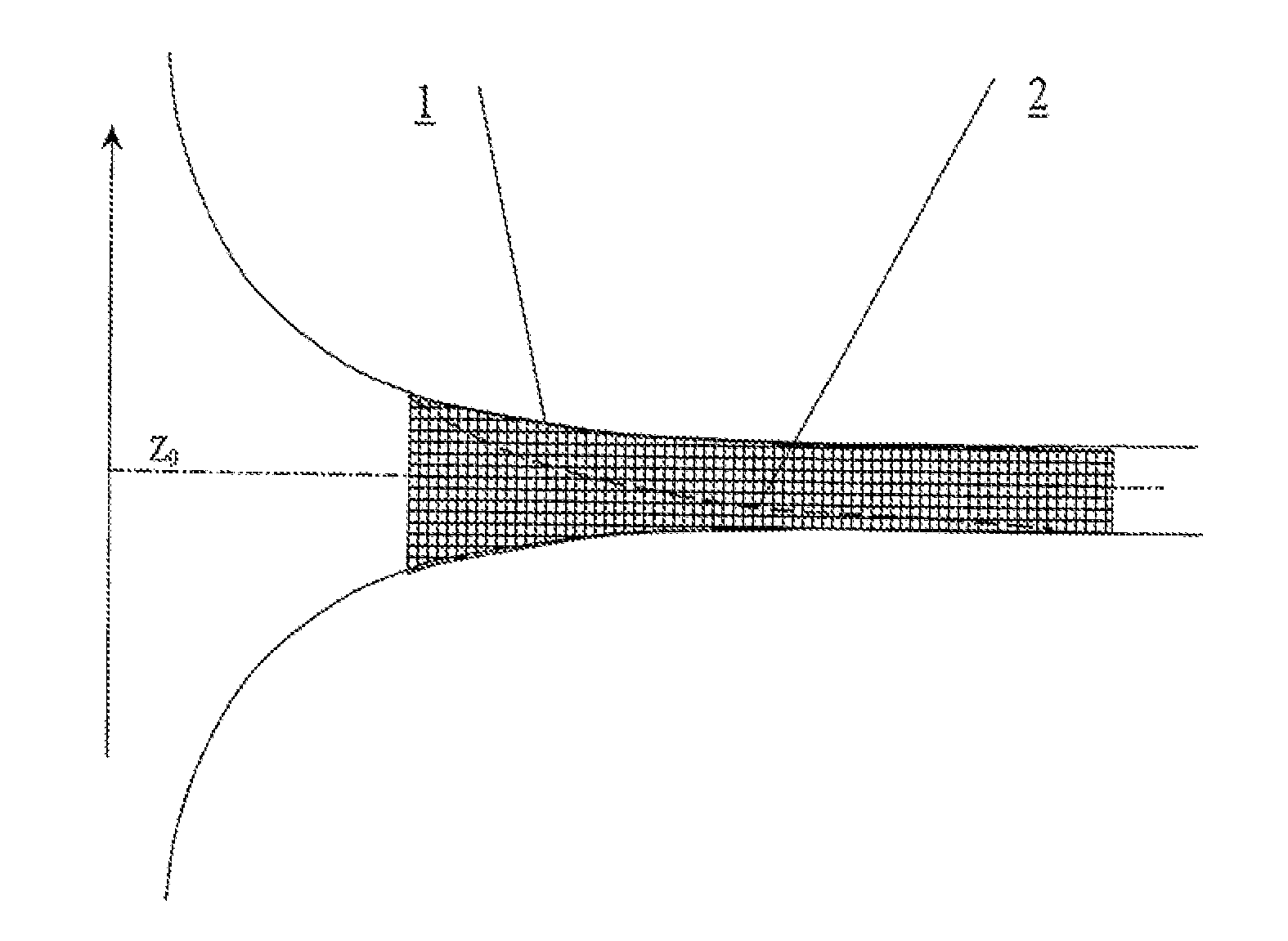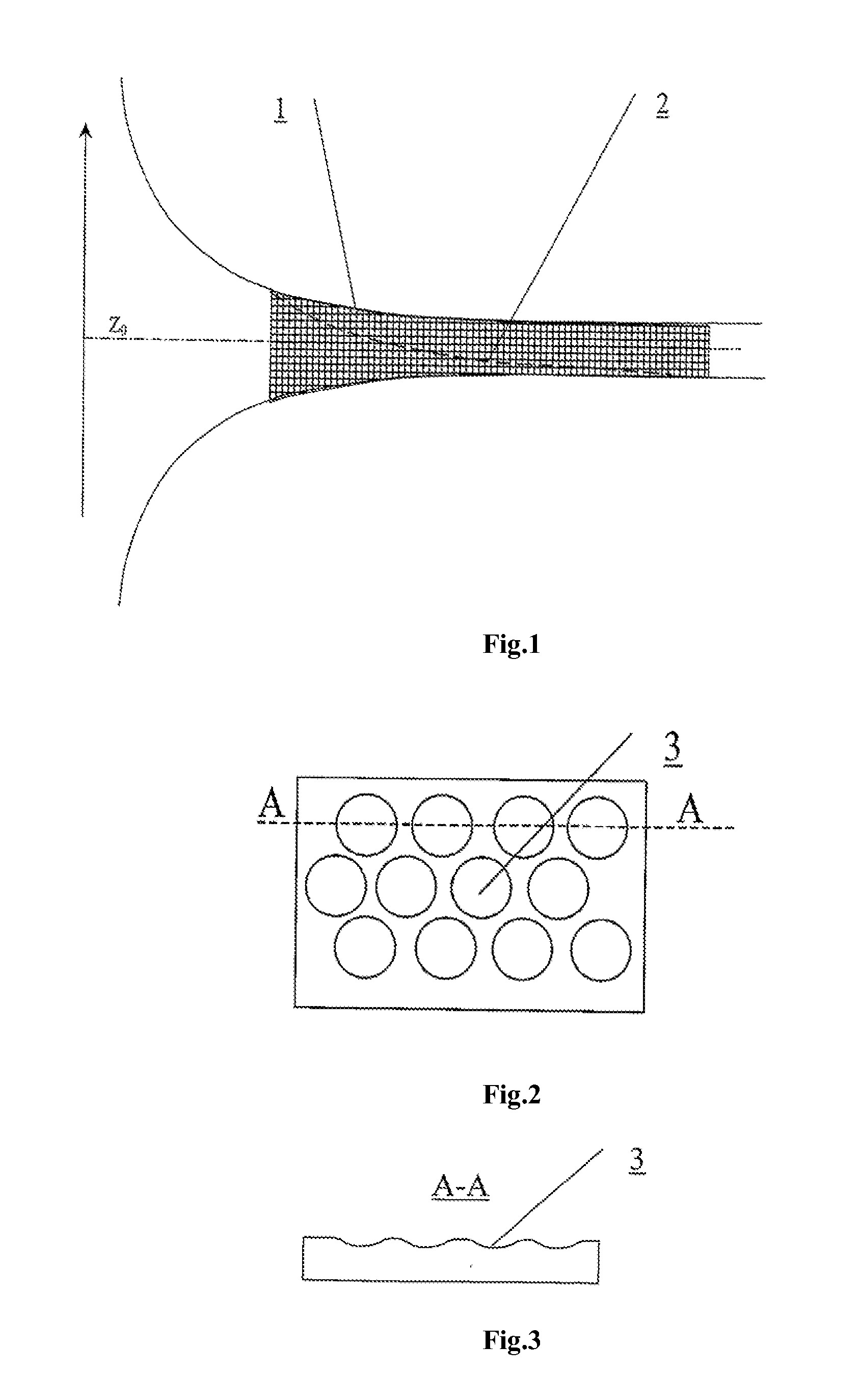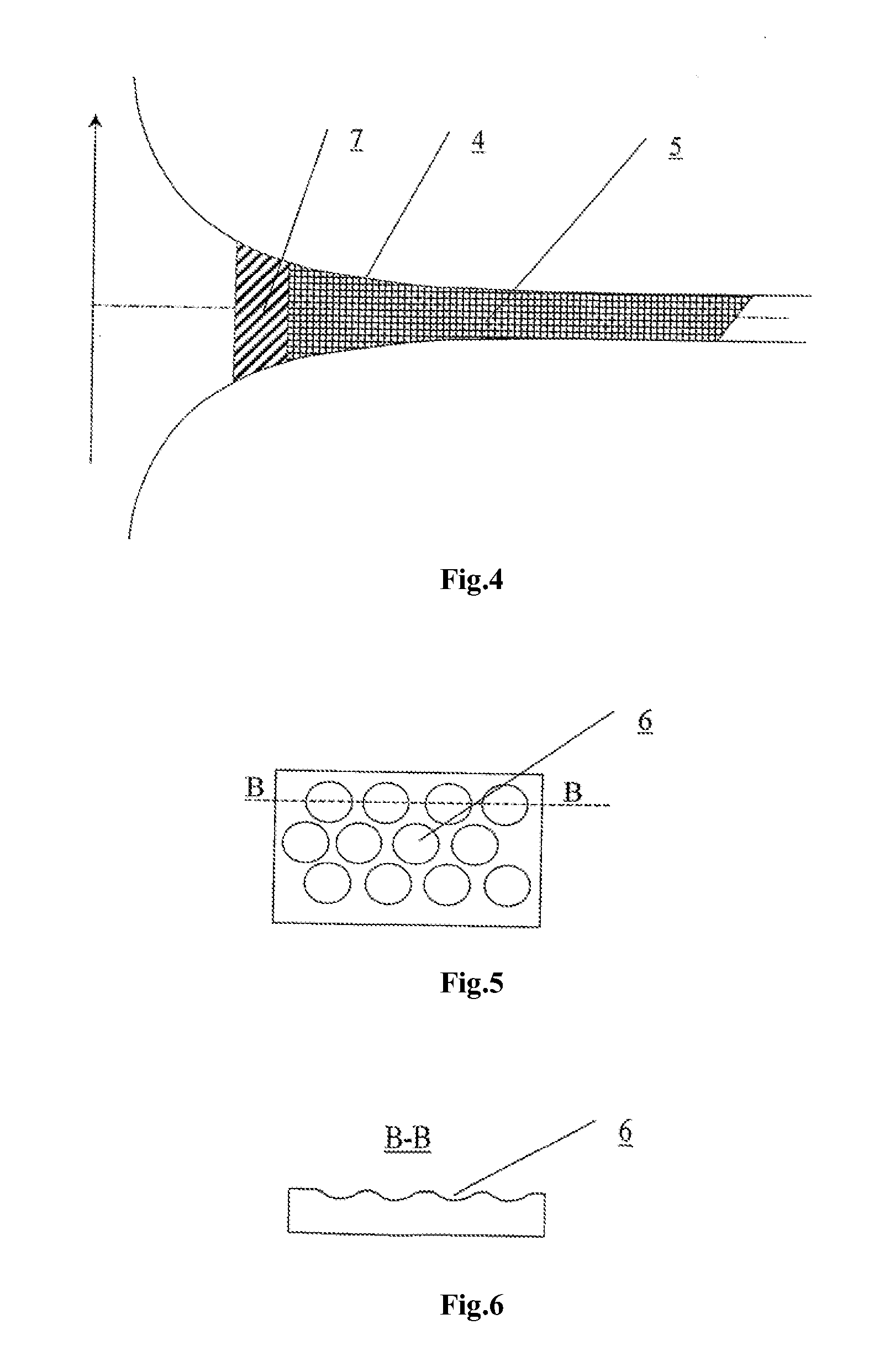Method for forming a blood flow in surgically reconstituted segments of the blood circulatory system and devices for carrying out said method
a blood flow and surgical technique, applied in the field of anatomy, physiology, and pathophysiology of blood circulation, can solve the problems and achieve the effect of reducing the risk of thrombosis and blood injury
- Summary
- Abstract
- Description
- Claims
- Application Information
AI Technical Summary
Benefits of technology
Problems solved by technology
Method used
Image
Examples
Embodiment Construction
[0092]It has been demonstrated by morphological, functional, and experimental methods that the pulsating blood flow in the heart and great vessels has a swirled structure that allows blood to be transported without energy losses and formation of flow separation and stagnation zones.
[0093]A quantitative analysis of the structure of a blood flow being formed, and the mechanisms for generating it and its evolution in the heart and great vessels undertaken by exact solutions of non-stationary hydrodynamic flows of a viscous fluid (Kiknadze G. I., Krasnov Yu. K., Evolution of a Spout-Like Flow of a Viscous Fluid, Sov. Phys. Dokl. 1986; 31(10): 799-801), helped, on the basis of experimental and clinical studies, to prove consistency of the resultant exact solutions with the well-known patterns of blood circulation physiology. As a result, a conception was formulated to match the specificities of swirled blood flow and blood circulation function (Kiknadze G. I., Oleinikov V. G., Gachechila...
PUM
 Login to View More
Login to View More Abstract
Description
Claims
Application Information
 Login to View More
Login to View More - R&D
- Intellectual Property
- Life Sciences
- Materials
- Tech Scout
- Unparalleled Data Quality
- Higher Quality Content
- 60% Fewer Hallucinations
Browse by: Latest US Patents, China's latest patents, Technical Efficacy Thesaurus, Application Domain, Technology Topic, Popular Technical Reports.
© 2025 PatSnap. All rights reserved.Legal|Privacy policy|Modern Slavery Act Transparency Statement|Sitemap|About US| Contact US: help@patsnap.com



